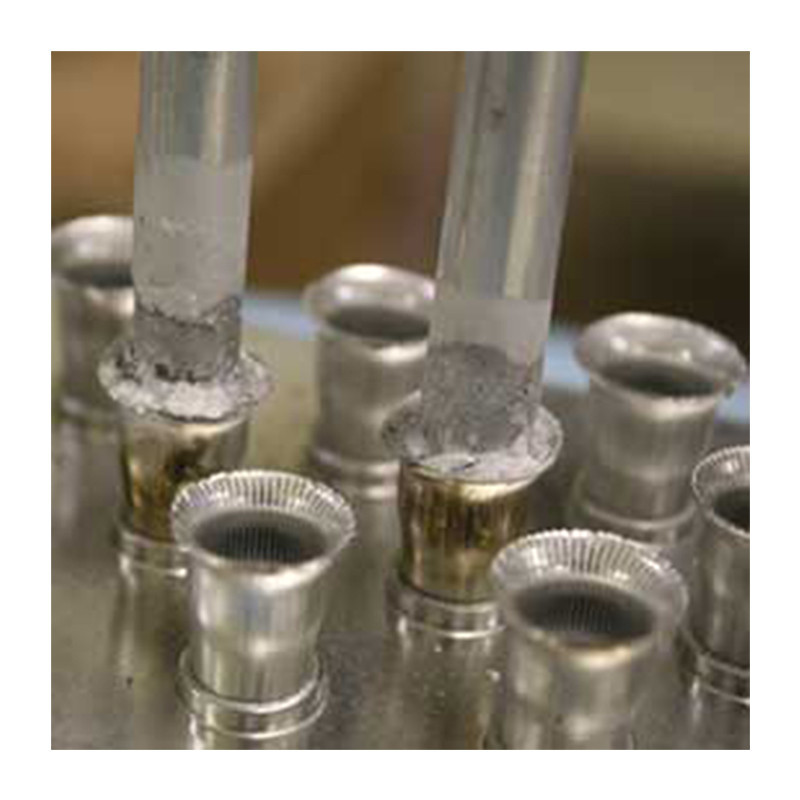

Musíte být přihlášen
Category


Fotografie slouží pouze pro informační účely. Zobrazit specifikaci produktu
please use latin characters
Tvrdé pájení je proces spojování kovových prvků pomocí pájek ze slitin kovů s teplotou tavení nad 427 °C, ale nižší než teplota tavení spojovaných částí. Tato technika umožňuje spojování stejných i různých kovů.
Pájené spoje:
Druh pájky používané při tvrdém pájení závisí na spojovaných částech. Nejčastěji se používají pájky na bázi mědi a fosforu, stříbra, hliníku, mědi, niklu a kobaltu.
Moderní indukční ohřev zajišťuje spolehlivé, bezkontaktní a energeticky úsporné zahřívání v minimálním čase bez použití plamene. Doba jednoho cyklu indukčního ohřevu je výrazně kratší ve srovnání s pájením plamenem, což umožňuje zpracovat více dílů ve stejném čase s menším množstvím tepla vyzářeného do okolí. Indukční pájení umožňuje kontrolu času, teploty, upevnění a polohy dílů, což činí proces opakovatelným a zajišťuje jednotný výsledný efekt.
Polo vodičové systémy umožňují ohřívat velmi malé oblasti v přesných tolerancích výrobního procesu bez narušení metalurgických vlastností materiálu. Pro velkoobjemovou výrobu nebo procesy s vysokými nároky na kvalitu lze díly pájet indukčně v inertní atmosféře bez tavidla a nákladného čištění, což snižuje oxidaci.
Máte zájem o tento produkt? Potřebujete další informace nebo individuální ceny?
musíš být přihlášen
Tvrdé pájení je proces spojování kovových prvků pomocí pájek ze slitin kovů s teplotou tavení nad 427 °C, ale nižší než teplota tavení spojovaných částí. Tato technika umožňuje spojování stejných i různých kovů.
Pájené spoje:
Druh pájky používané při tvrdém pájení závisí na spojovaných částech. Nejčastěji se používají pájky na bázi mědi a fosforu, stříbra, hliníku, mědi, niklu a kobaltu.
Moderní indukční ohřev zajišťuje spolehlivé, bezkontaktní a energeticky úsporné zahřívání v minimálním čase bez použití plamene. Doba jednoho cyklu indukčního ohřevu je výrazně kratší ve srovnání s pájením plamenem, což umožňuje zpracovat více dílů ve stejném čase s menším množstvím tepla vyzářeného do okolí. Indukční pájení umožňuje kontrolu času, teploty, upevnění a polohy dílů, což činí proces opakovatelným a zajišťuje jednotný výsledný efekt.
Polo vodičové systémy umožňují ohřívat velmi malé oblasti v přesných tolerancích výrobního procesu bez narušení metalurgických vlastností materiálu. Pro velkoobjemovou výrobu nebo procesy s vysokými nároky na kvalitu lze díly pájet indukčně v inertní atmosféře bez tavidla a nákladného čištění, což snižuje oxidaci.
Vaše hodnocení nelze odeslat
Nahlásit komentář
Zpráva odeslána
Váš podnět nelze odeslat
Napište svůj názor
Zkontrolovat před odesláním
Vaši recenzi nelze odeslat
